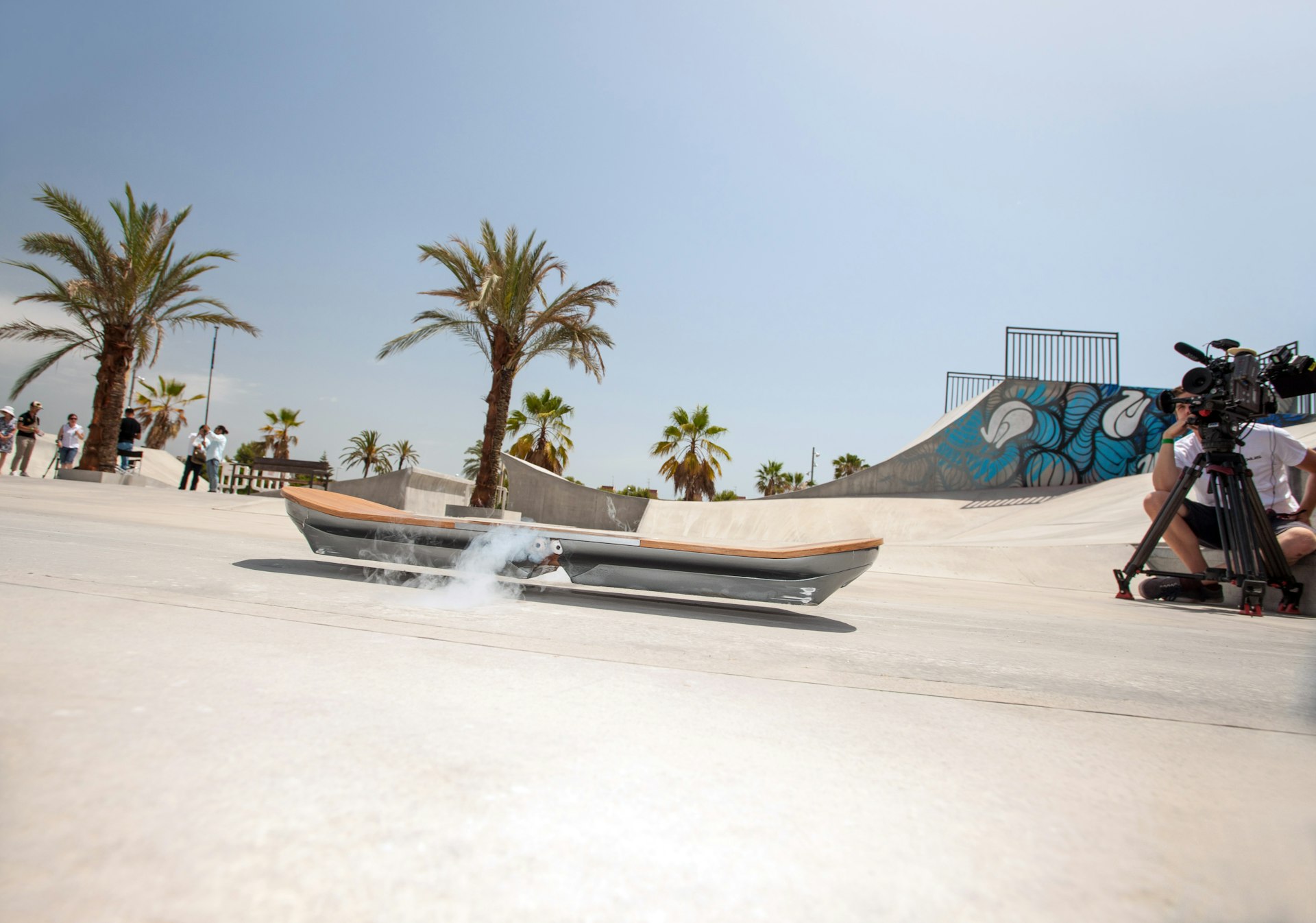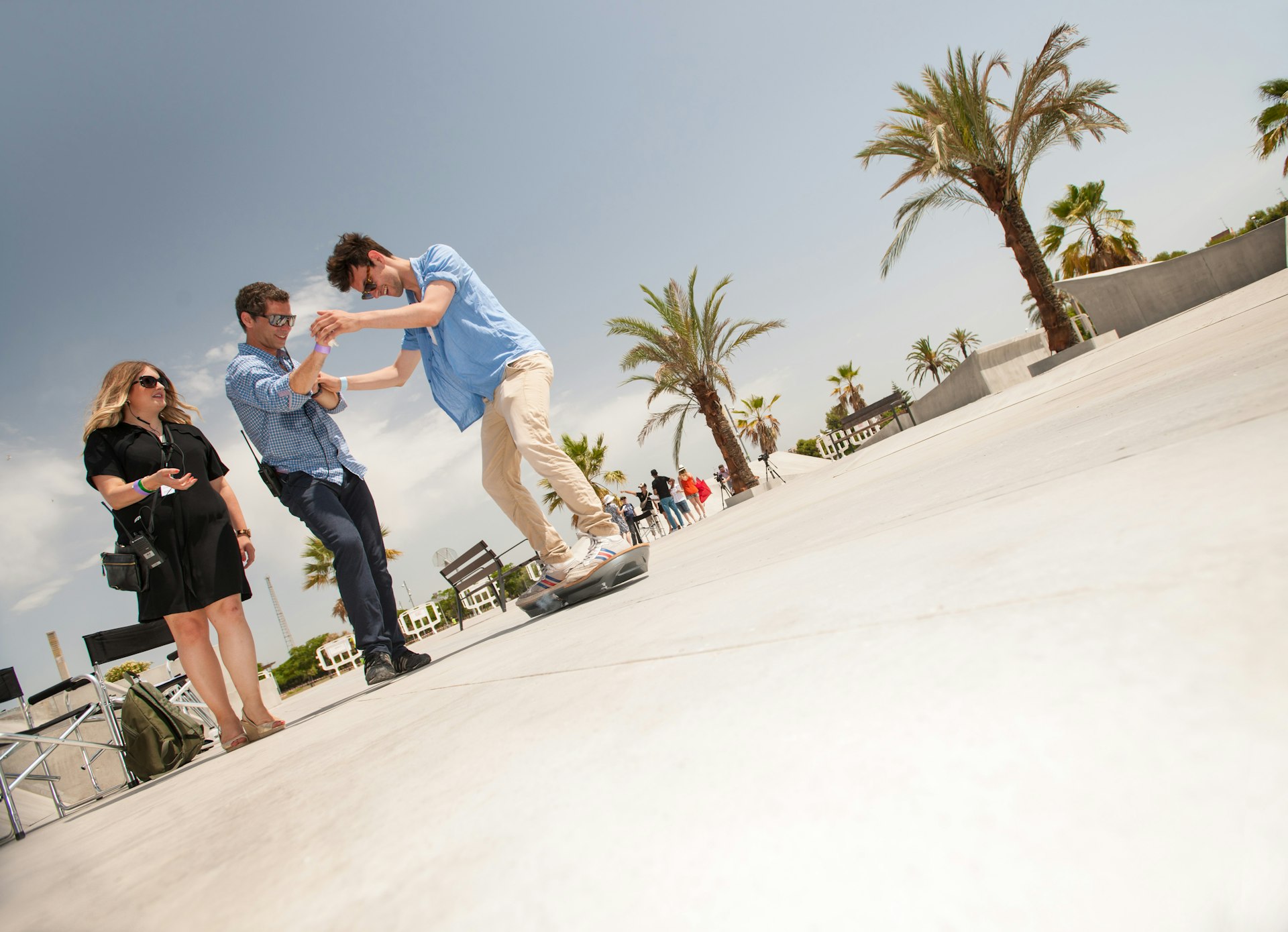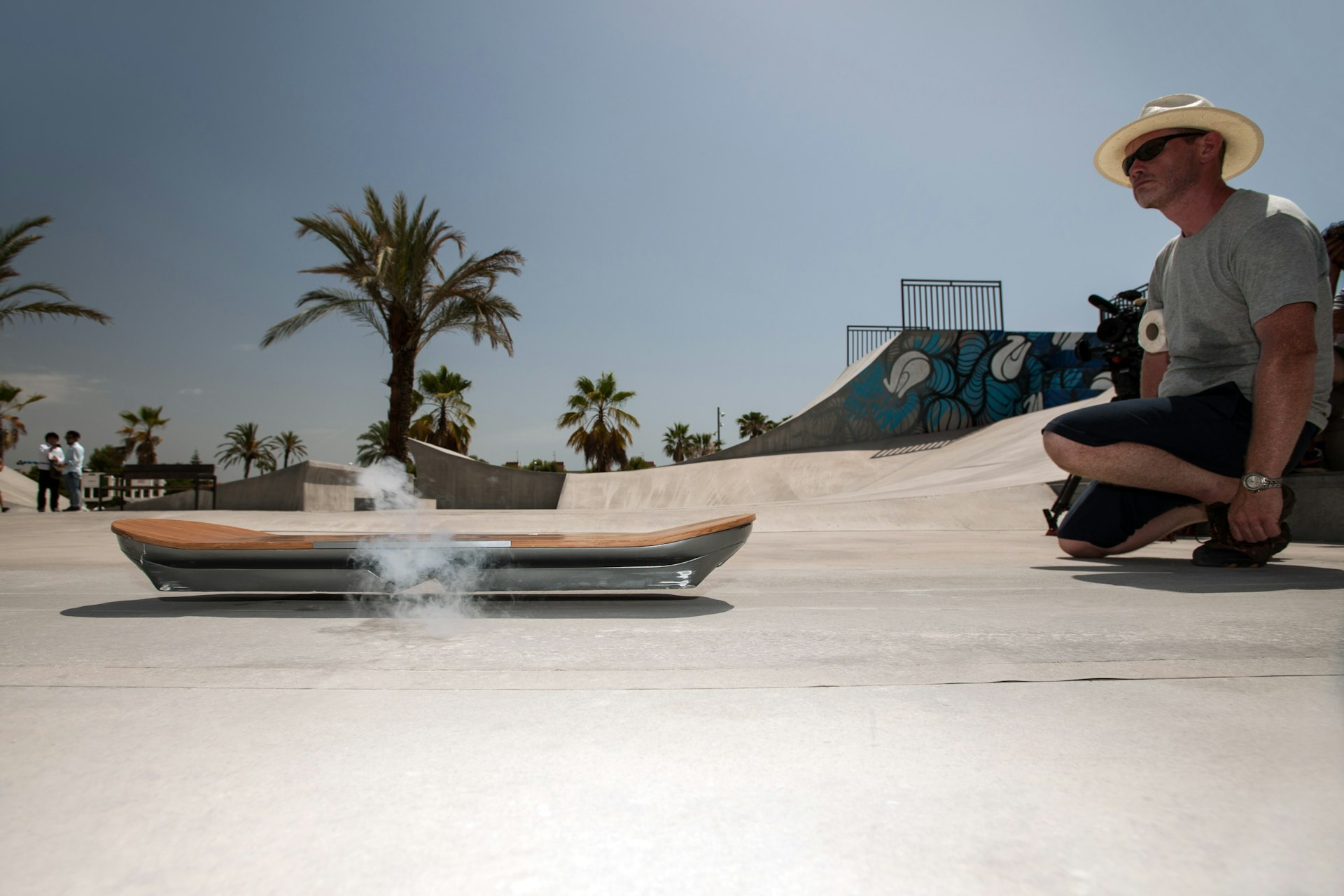- Text by Alex Robert Ross
10.30am in Barcelona and the sun’s hammering down on the concrete. I can see the journalists around me burning up in real-time, beads of sweat forming on their rapidly reddening foreheads. There are waves coming in on the beach a couple of hundred feet from the skate park but there’s no breeze off the ocean. I’m squinting at a man in business casual at the top of a half pipe.
That man is David Nordstrom, managing director of Toyota/Lexus. He’s standing directly in front of the sun like a corporate messiah, smiling through the heat and somehow not sweating as he tells the assembled press how this project is all a part of the Lexus ethos. They’ve built a hoverboard.
Nordstrom is understandably pleased with himself here. This project has taken more than a year to pull together, and millions of dollars have been staked on its success. When a seven second clip dropped online a couple of weeks ago, it became the most read news story on the BBC website for the day. Just seven seconds of a board hovering above the ground. No rider, no explanation, millions upon millions of hits.

That’s a testament to the giddiness that surrounds even the slightest hint of hover technology, the type of thing that turns grown adults into e-number addled children. Yes, Back to the Future II dropped the idea in front of us, but it’s not just an errant nostalgia. In 2015 – the dystopian year that Marty McFly travels to and the thirtieth anniversary of Back to the Future I’s release – we probably expected technology to have caught up with our imaginations.
The question over whether or not Lexus have created the world’s first fully functioning hoverboard isn’t as easy to answer as one might think, though. Here are the basics: the board uses maglev technology, the same as Japan’s bullet trains. Essentially that means that the board runs on a magnetic track, in this case covered over with plywood to make it look like concrete. To a great extent, it’s illusory.
The technical difficulties involved in such a trick are insane. There’s no electromagnetism involved here, so the board’s magnets have to be kept well below freezing temperature at all times. In order to maintain that temperature, a team of scientists fill the board with liquid nitrogen every few minutes, creating the mesmeric smoke effect coming off the side of the board. Each piece of magnetic track hidden beneath the wood has to be carefully placed down. If not, they would snap together with 7.5 tonnes of force.
Those involved in shooting the video released this morning think of all this as an illusion. Their view is that they were putting together a clip that would give the impression of a Marty McFly-style free-for-all, rolling around on a skateboard without wheels. And that may well have been Lexus’ intention at first.

But, whether or not Lexus intended for this to be the case, it’s become more than a simple trick of the eye. The board is tough to ride, no matter how skilful or board-minded the rider might be. The company auditioned a dozen people to become the world’s first hoverboarder before going with British pro skater Ross McGouran. Many of those auditioned were disgruntled with the board, upset that it wouldn’t ride as easily as they had expected. They, like the rest of us, expected a skateboard with no wheels, floating flawlessly above the ground.
But with a single, thin track holding the board up, it’s a more difficult proposition, more akin to riding a long ice skate along a rail. The margin for error is unbelievably thin. I know this because I tried it. I managed to get up to walking pace at best before my balance pushed one side of the board to the plywood and slowed me to a halt. Get going for even a moment, though, and it’s brilliant.

Floating above the freakin’ ground: not as easy as you’d think
McGouran worked for weeks to hone his technique, throwing himself around the Barcelona track before eventually snapping his ankle the night before we arrive. He adjusted his style, shifting his stance to move further back on the board, placing a greater emphasis on balance than speed.
In doing so, he has had a hand in pioneering a new board sport. It’s a close relative of skateboarding, but it’s differences are too striking for them to be compared side by side. The video that Lexus released this morning is a refreshing reflection of this. It’s less the magic trick that we were promised and more a compilation of the pitfalls and euphoric highs that come with invention. McGouran wipes out more than once, pushing the board past the limits that even the scientists had set by completing a near-impossible jump. And he loves every minute of it.

Speaking with McGouran is a bittersweet experience. He’s spent more time with this board than anyone bar the scientists that invented it, but knows that Lexus are unlikely to take the project further. Commercial sales are farfetched – nobody is going to build their own track at home – but McGouran wants to be a part of taking this further beyond the illusion that the company dreamed up. Double the track, he said, and balance will be that much easier. Kids could get involved on tracks around the world and a World Series would be a hell of a thing to watch.
But therein lies the inherent sadness. Lexus have created something quite masterful with this board. The technicians and scientists behind it, the boarders that tried it out can see a new world of possibilities for it. No doubt a dreaming public would love to see where it goes. Market forces are unlikely to allow for that, though, and this track will come down.
When Robert Zemeckis sent Doc and Marty forward to 2015, he predicted that hoverboards would be consumer technology. In his wildest dreams, he couldn’t have imagined that we’d build one, make a video of it, share it on the internet, then tear it all down.
Enjoyed this article? Like Huck on Facebook or follow us on Twitter.
